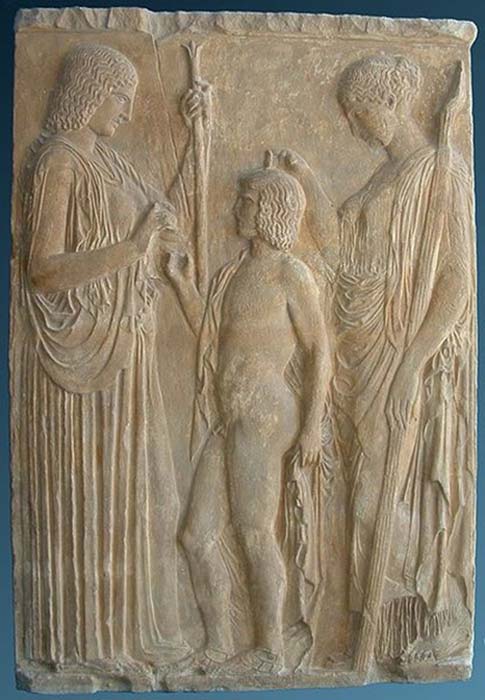
Baubo, Great Goddess and Demeter’s Female Fool in the Eleusinian Mysteries
In 1898, a group of German archaeologists working in the Demeter sanctuary at Priene unearthed a peculiar set of Hellenistic female figurines. The head of each of these figurines sits directly on her legs. Each figure also has long hair that drapes around her back resembling a lifted veil. These figures represent Baubo, sometimes referred to as Iambe. Homeric legends identify her as a daughter of Pan and Echo.

Terracotta Baubo figurine from Priene. (Public Domain)
Baubo in the Eleusinian Mysteries
The few lines in the 7th century BC Homeric Hymn to Demeter relating to Baubo provides the background story of the greatest mystery of the ancient world - the Eleusinian Mysteries. Celebrations of these mysteries began at Eleusis (bordering present-day Athens) in about 1450 BC and continued for some 2,000 years until the sanctuary was completely obliterated by the 5th century AD.
Unfortunately, Baubo’s history is somewhat obscured by strict prohibitions against revealing the ancient mysteries of Demeter, in which she plays an integral part. Due to this secrecy, what is known of her is revealed by theologians who railed against the ritual of the pagan religions. In time, these assumptions were somewhat amplified by more contemporary scholars to fill in the gaps that have been purposely left unfilled by the silence surrounding the Eleusinian mysteries.
Demeter was wandering the earth mourning the loss of her daughter, Kore, who had been violently abducted by Hades, the god of the underworld. Disguising herself as an old woman, Demeter took refuge in the city of Eleusis and was soon welcomed into the home of the king.

Copy of a votive relief found in Eleusis representing the Eleusinian deities in a scene of mysterious ritual, circa 440-430 BC (CC BY-SA 3.0)
Everyone in the king's household tried unsuccessfully to console the depressed old woman until Baubo appeared. Baubo made a number of humorous and risqué remarks causing Demeter to smile. Then, Baubo suddenly lifted her skirt in front of Demeter, who responded with a long and hearty belly laugh. Although different versions of this story provide different images of what Demeter saw under Baubo's skirt, whatever she saw lifted her out of her depression. With her spirits and confidence restored, Demeter then persuaded Zeus to command Hades to release her daughter.
Is Baubo’s Crown a Clue to Her Lost Origin?
The origin of Baubo goes back to very ancient times in the Mediterranean region, particularly western Syria. Her identity eventually became blended with those of earlier goddesses such as Atargatis from northern Syria and Cybele from Asia Minor. As it was very likely that Baubo originated as a goddess of vegetation, her later appearance as a servant in the myths of Demeter may have marked the transition to an agrarian culture where power shifted to Demeter, the Greek goddess of grains and the harvest.




